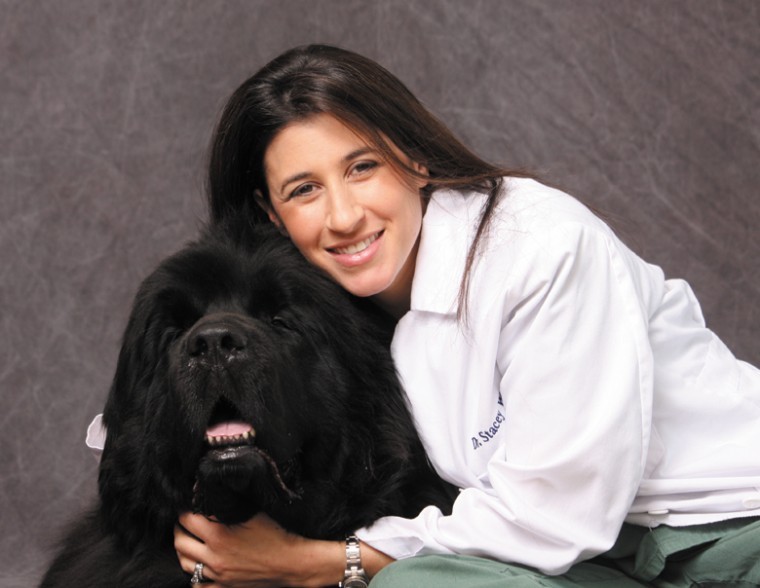Local veterinarian now offers stem cell treatments for pets
Published January 18, 2012
Almost 40 percent of U.S. households own at least one dog and 33 percent own at least one cat-so says the Humane Society of the United States-and some of these animals are being restored to health through the use of stem cell therapy.
Dr. Stacey Wallach, who owns Town and Country Veterinary Hospital in the suburb of the same name, tells this story: “A client of mine has an expensive show horse that had been through surgery and therapy for a leg injury. The animal was not getting better and was confined to its stall when the veterinarian suggested a stem cell treatment. The outcome was miraculous.”
ADVERTISEMENT
Though it is no longer a jumper, the horse is alive and well and working as a therapy horse. “This story got me really interested in stem cell treatments for animals, and I got certified in the procedure several months ago,” says Wallach, 34. “It’s not for everyone, but it is the big new thing in veterinary medicine.”
Wallach, whose family is active at Congregation Shaare Emeth in Creve Coeur, made time recently to talk about stem cell treatments for pets and other aspects of her life as a veterinarian.
Exactly what is stem cell therapy used for in pets?
The most common ailments are degenerative arthritis, a cartilage injury and hip or elbow dysplasia. It also helps animals that can’t handle anti-inflammatory medications or those that are not benefiting from those medications.
How long has this treatment been available in veterinary medicine?
It’s been around about 10 years for use on horses, and more recently for smaller animals.
Where do you get the stem cells?
In a surgical procedure, we extract tissue from the animal’s own fat. We send the fat to a company that harvests and processes the stem cells. Then we inject the cells into the animal’s joints or at the appropriate site.
What happens next?
ADVERTISEMENT
The stem cells reduce inflammation and also help regenerate healthy tissue. There is no risk of rejection because we use the animal’s own cells. Vets report a 90 percent success rate with the treatment. It’s really amazing.
How soon do pet owners see a difference?
It can happen quickly, or it may take up to 90 days. It depends on the case.
Have you done any cases yet?
I have not, but I am excited to get started. Right now I am waiting for a case where it would work. It’s not for everybody. For one thing, it’s very expensive-between $3,000 and $4,000. Again, the treatments do no harm to the animal, just harm to the pet owner’s wallet.
You spend all day long taking care of animals. Do you have pets at home?
I do-three dogs and a cat. I grew up outside Albany, N.Y., with just one dog at a time, though I did ride horses competitively.
How did you decide to become a veterinarian?
I have no idea what first got me interested, but by the time I was 4 or 5, I said I would be a vet when I grew up. I just knew it. I attended vet school at the University of Missouri at Columbia. That’s where I met my husband, and we ended up in St. Louis. I opened my veterinary hospital two years ago in January.
What do you like about veterinary medicine?
It’s very progressive. Veterinarians now offer acupuncture, physical therapy, laser therapy and alternative medicine in the care of pets. Even food therapy is changing, with new pet foods available to help treat disease. We are always seeing new medications and treatments.
Are other local veterinarians offering stem cell treatments yet?
Maybe two others so far. Not a lot of people are doing it yet, but story after story shows that the treatments are successful. We’re all just starting to let people know that this can help some animals that are suffering.
















